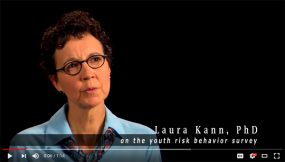Healthy Youth Multimedia Resources
The high-resolution, public domain visuals below are available for use in your publication. This page will be updated as new media resources become available.
If you need more information about the data connected to the release, please click the more information button to find accompanying press releases, articles, and reports.
New CDC analyses published today shine additional light on the mental, physical, and emotional health of U.S. high school students during the COVID-19 pandemic, including a disproportionate level of threats that some students experienced.
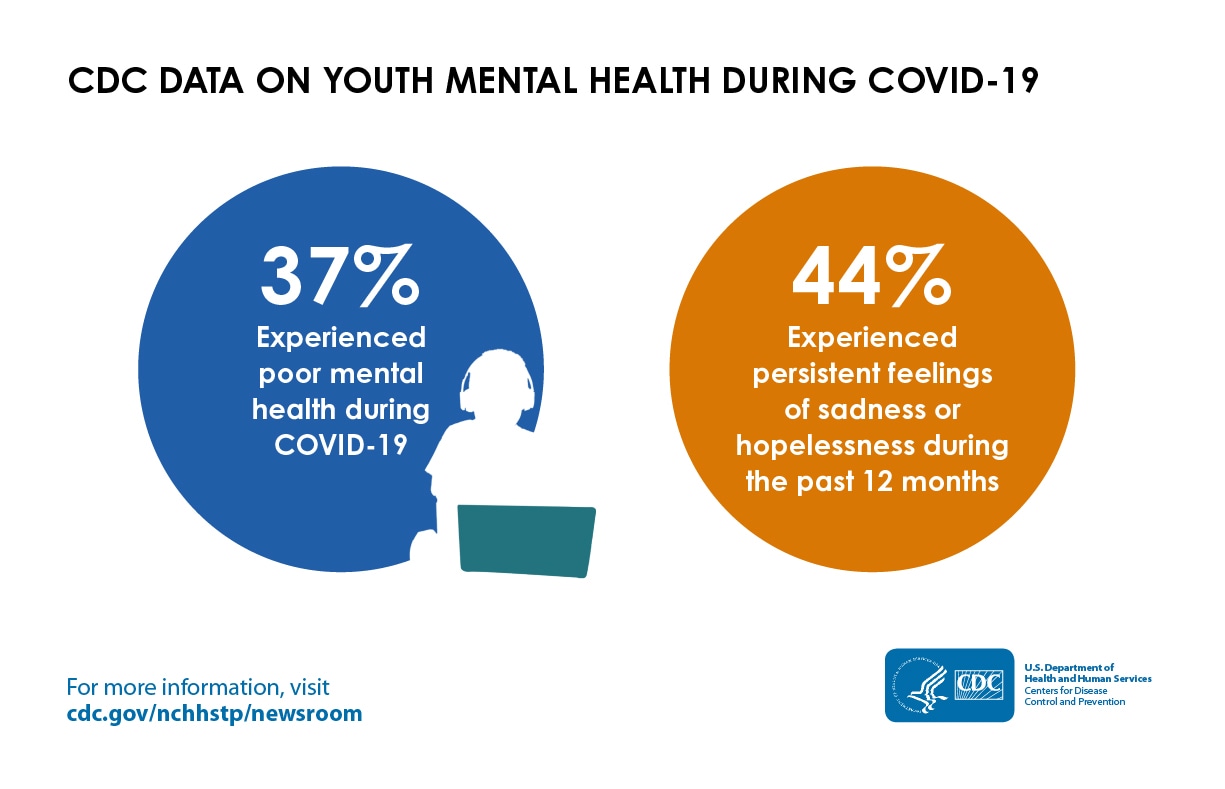 [JPG - 286 KB]
[JPG - 286 KB]CDC Data on Youth Mental Health During COVID-19
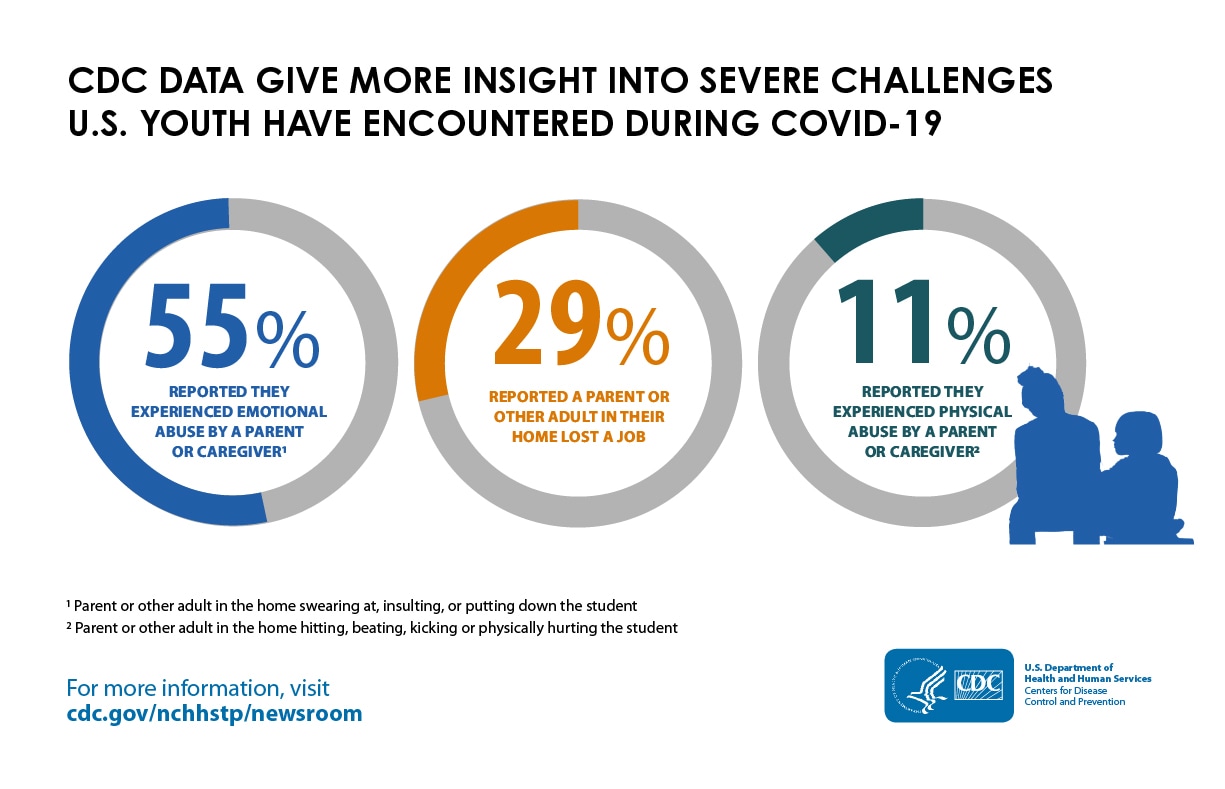 [JPG - 340 KB]
[JPG - 340 KB]CDC Data Give More Insight Into Severe Challenges U.S. Youth Have Encountered During COVID-19
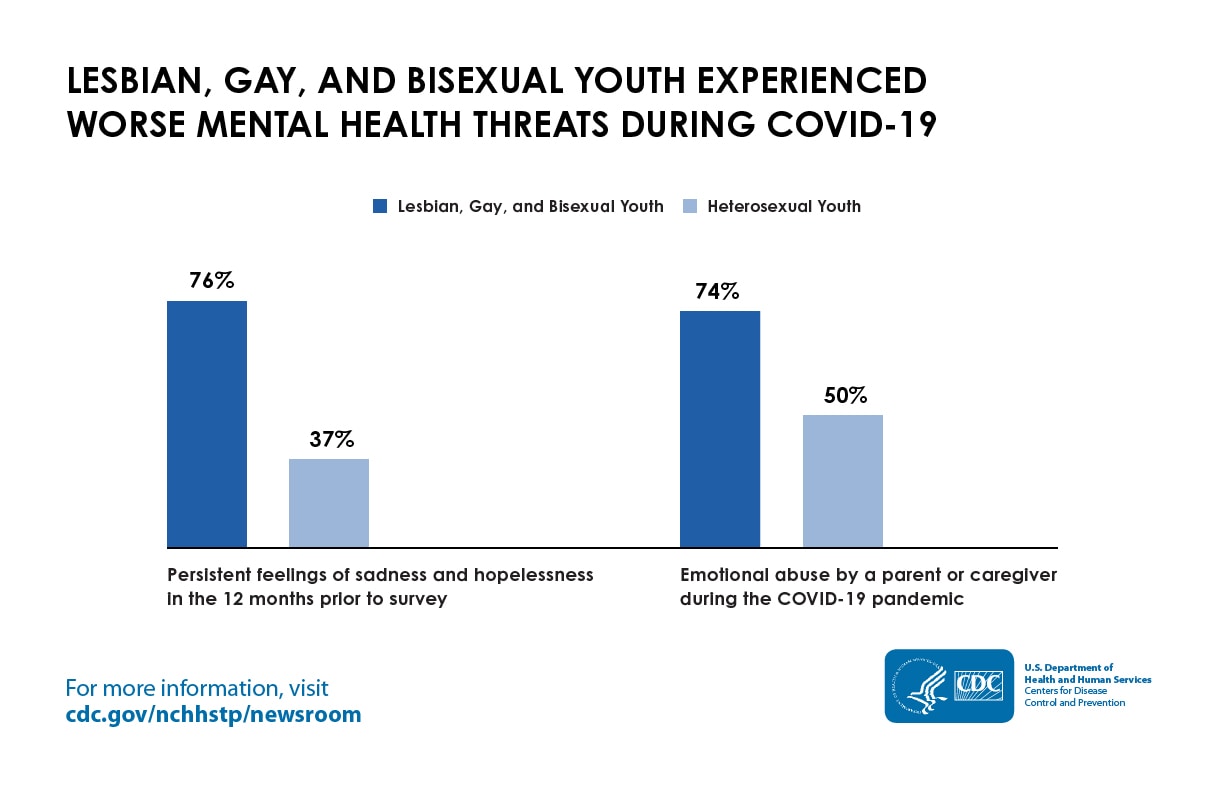 [JPG - 437 KB]
[JPG - 437 KB]Lesbian, Gay, and Bisexual Youth Experieneced Worse Mental Health Threats During COVID-19
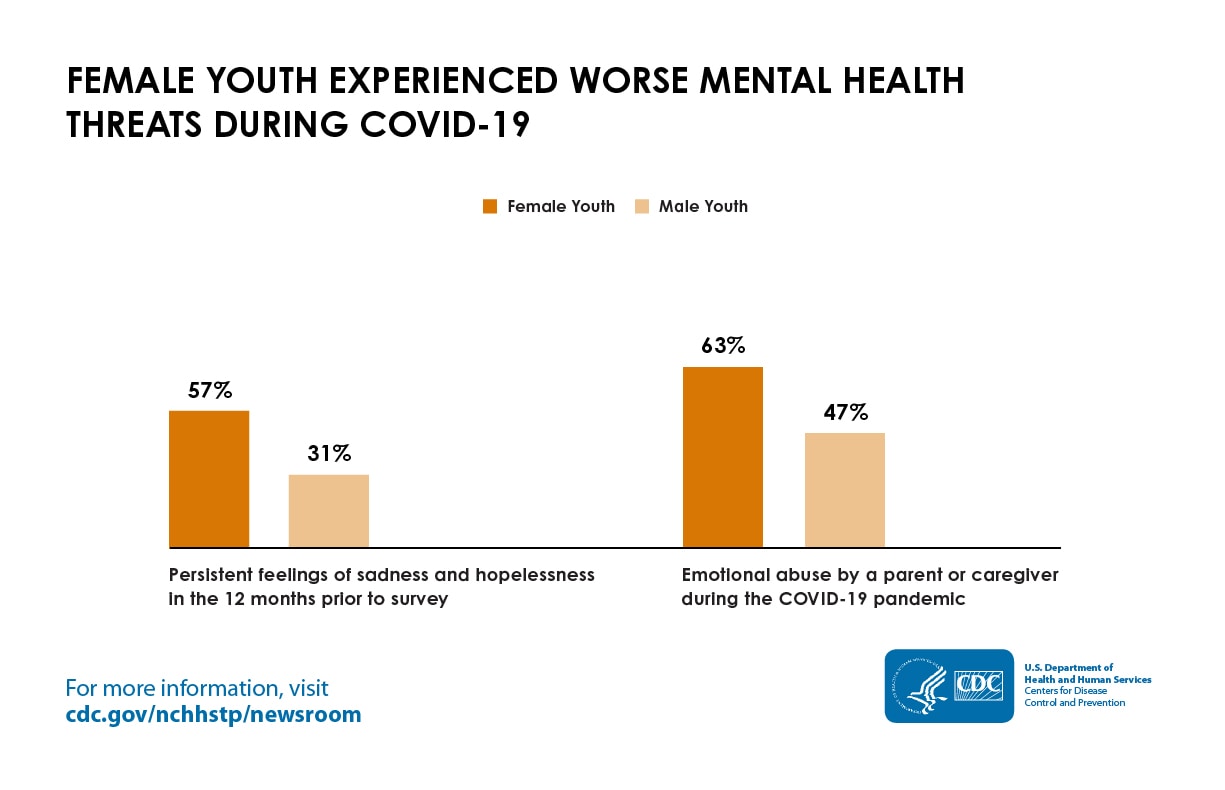 [JPG - 184 KB]
[JPG - 184 KB]Female Youth Experieneced Worse Mental Health Threats During COVID-19
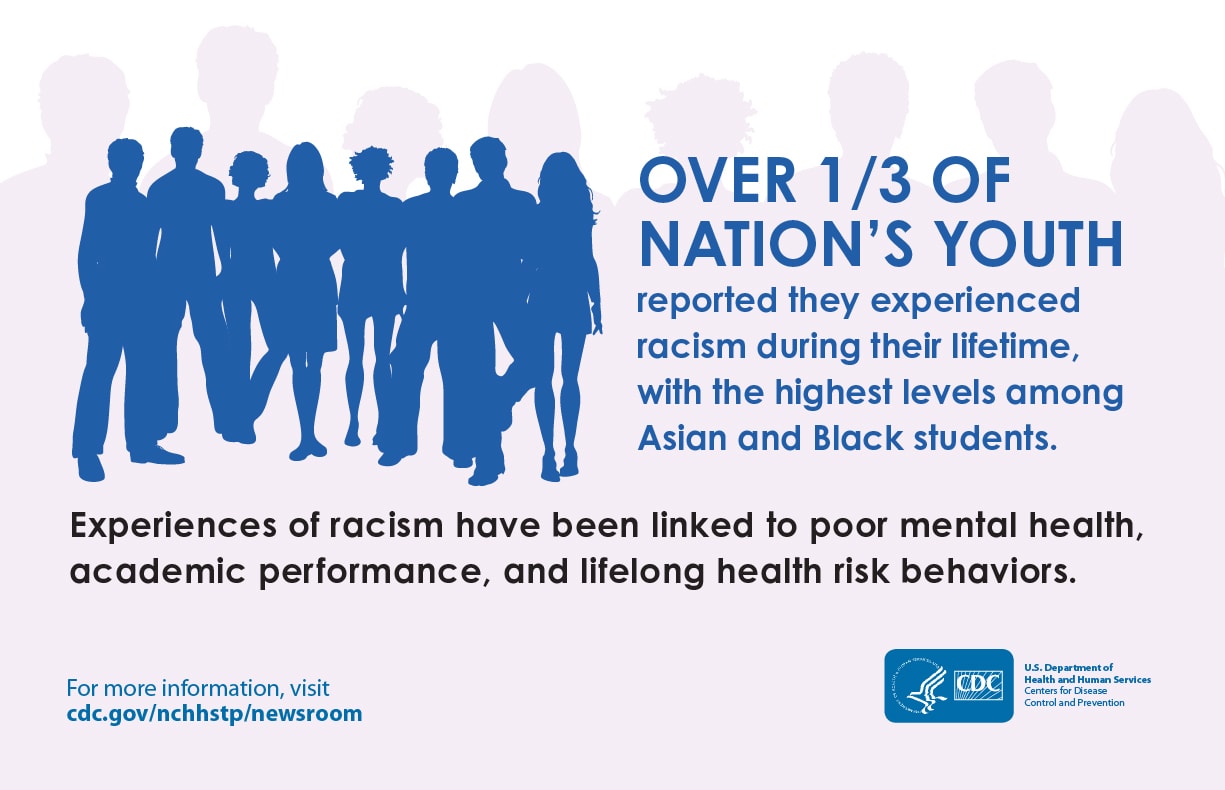 [JPG - 388 KB]
[JPG - 388 KB]Over 1/3 of nation’s youth reported they experienced racism during their lifetime, with the highest levels among Asian and Black students.
CDC’s National Youth Risk Behavior Survey (YRBS) Data Summary & Trends Report: 2009 – 2019 shows that little progress has been made in improving mental health and reducing suicide-related behaviors among U.S. high school students over the past decade.
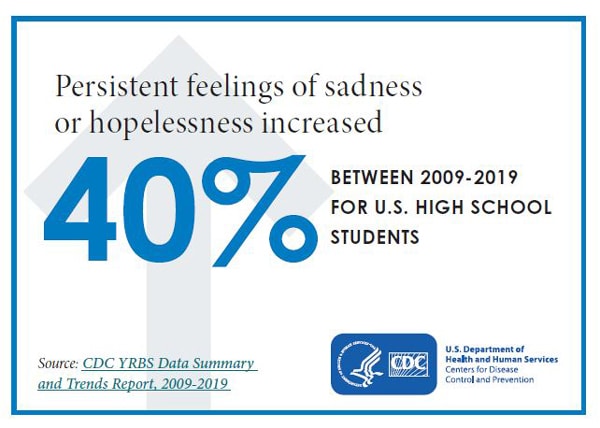 [JPG - 52 KB]
[JPG - 52 KB]Persistent feelings of sadness or hopelessness increased
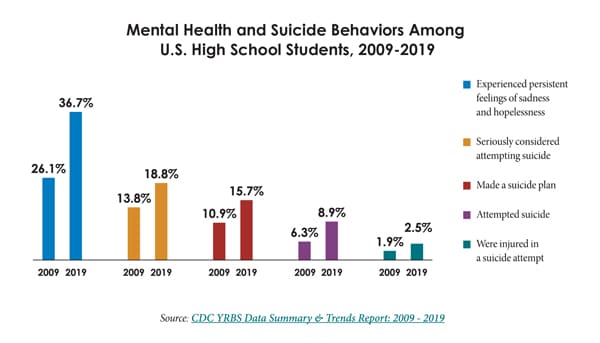 [JPG - 285 KB]
[JPG - 285 KB]Mental health and suicide behaviors have increased among U.S. high school students
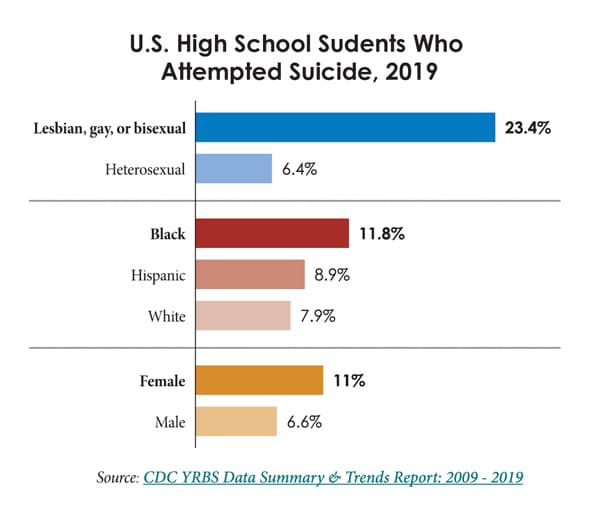 [JPG - 212 KB]
[JPG - 212 KB]Percentage of U.S. high school students that attempted suicide in 2019
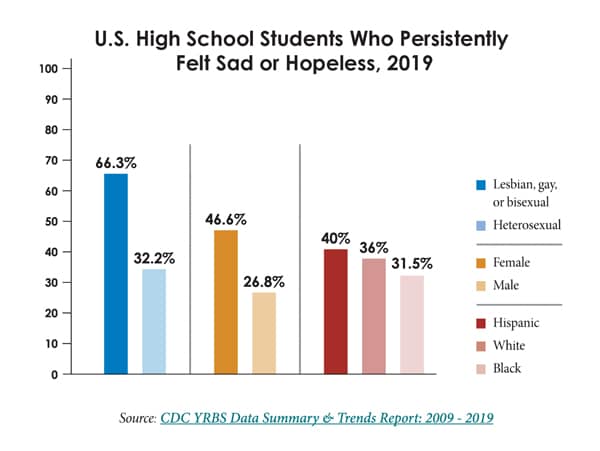 [JPG - 238 KB]
[JPG - 238 KB]U.S. high school students feeling persistently sad or hopeless in 2019
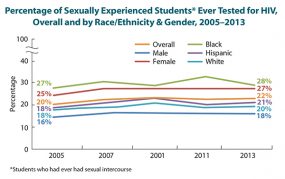 [JPG - 354 KB]
[JPG - 354 KB]Percentage of Sexually Experienced Students Ever Tested for HIV, Overall and by Race/Ethnicity and Gender, 2005-2013
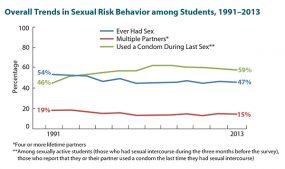 [JPG - 311 KB]
[JPG - 311 KB]Overall Trends in Sexual Risk Behavior among Students, 1991-2013
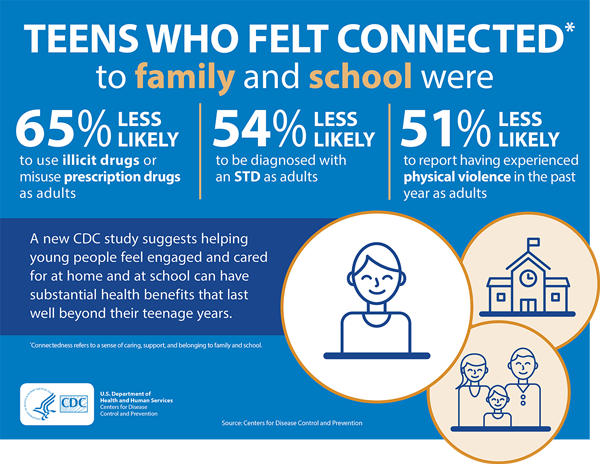 [PNG - 519 KB]
[PNG - 519 KB]Adolescent Connectedness & Adult Health Outcomes
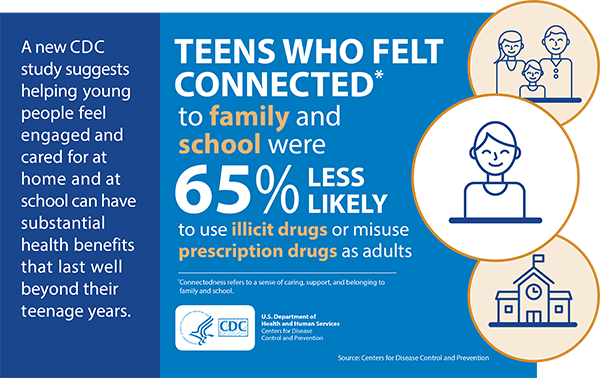 [PNG - 485 KB]
[PNG - 485 KB]Adolescent Connectedness & Adult Health Outcomes -Lifetime Prescription Drug Misuse and other Illicit Drug Use
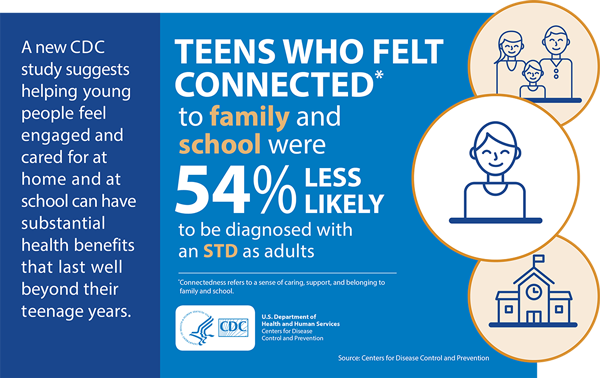 [PNG - 473 KB]
[PNG - 473 KB]Adolescent Connectedness & Adult Health Outcomes - STDs
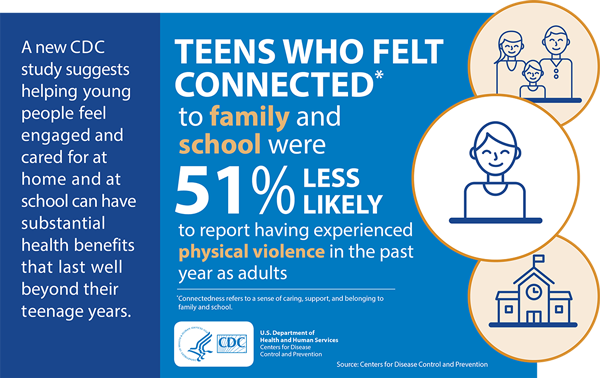 [PNG - 491 KB]
[PNG - 491 KB]Adolescent Connectedness & Adult Health Outcomes - Physical Violence
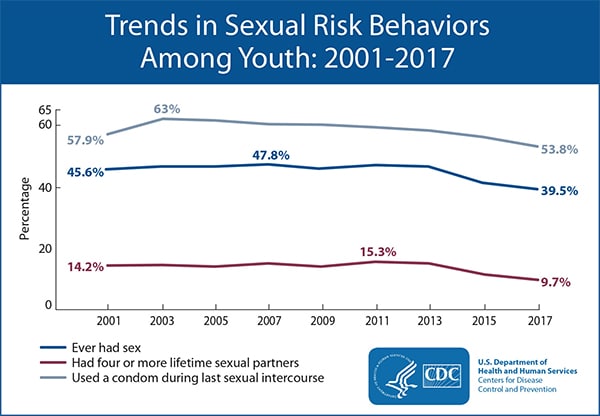 [JPG - 220 KB]
[JPG - 220 KB]Trends in Sexual Risk Behaviors Among Youth: 2001-2017
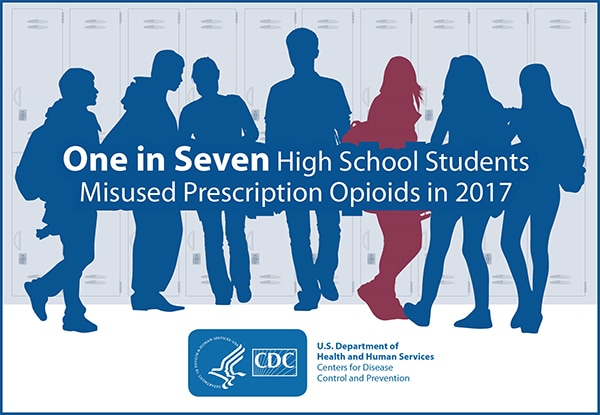 [JPG - 257 KB]
[JPG - 257 KB]Misuse of Prescription Opioids, 2017
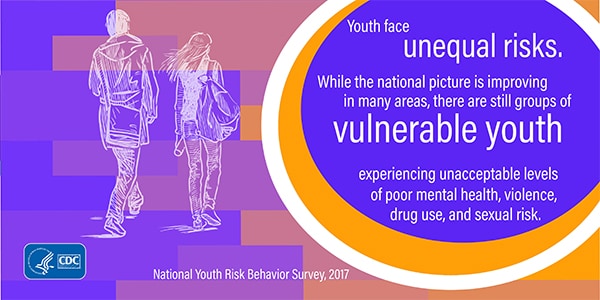 [JPG - 807 KB]
[JPG - 807 KB]Youth Face Unequal Risks
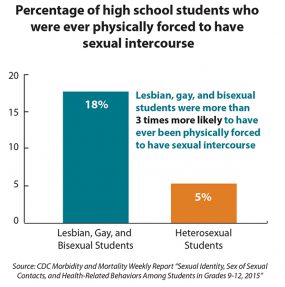 [JPG - 452 KB]
[JPG - 452 KB]Percentage of Students Who Were Ever Physically Forced to Have Sexual Intercourse
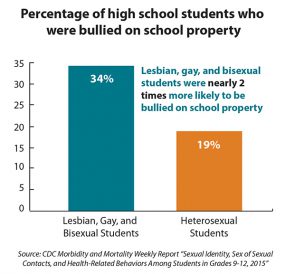 [JPG - 416 KB]
[JPG - 416 KB]Percentage of Students Who Were Bullied on School Property
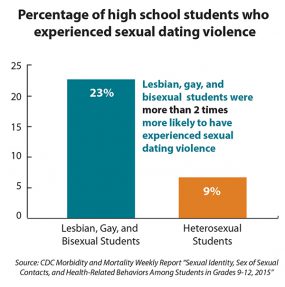 [JPG - 437 KB]
[JPG - 437 KB]Percentage of Students Who Experienced Sexual Dating Violence
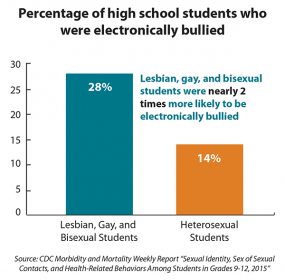 [JPG - 403 KB]
[JPG - 403 KB]Percentage of Students Who Were Electronically Bullied
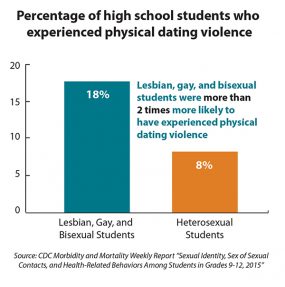 [JPG - 417 KB]
[JPG - 417 KB]Percentage of Students Who Experienced Physical Dating Violence
